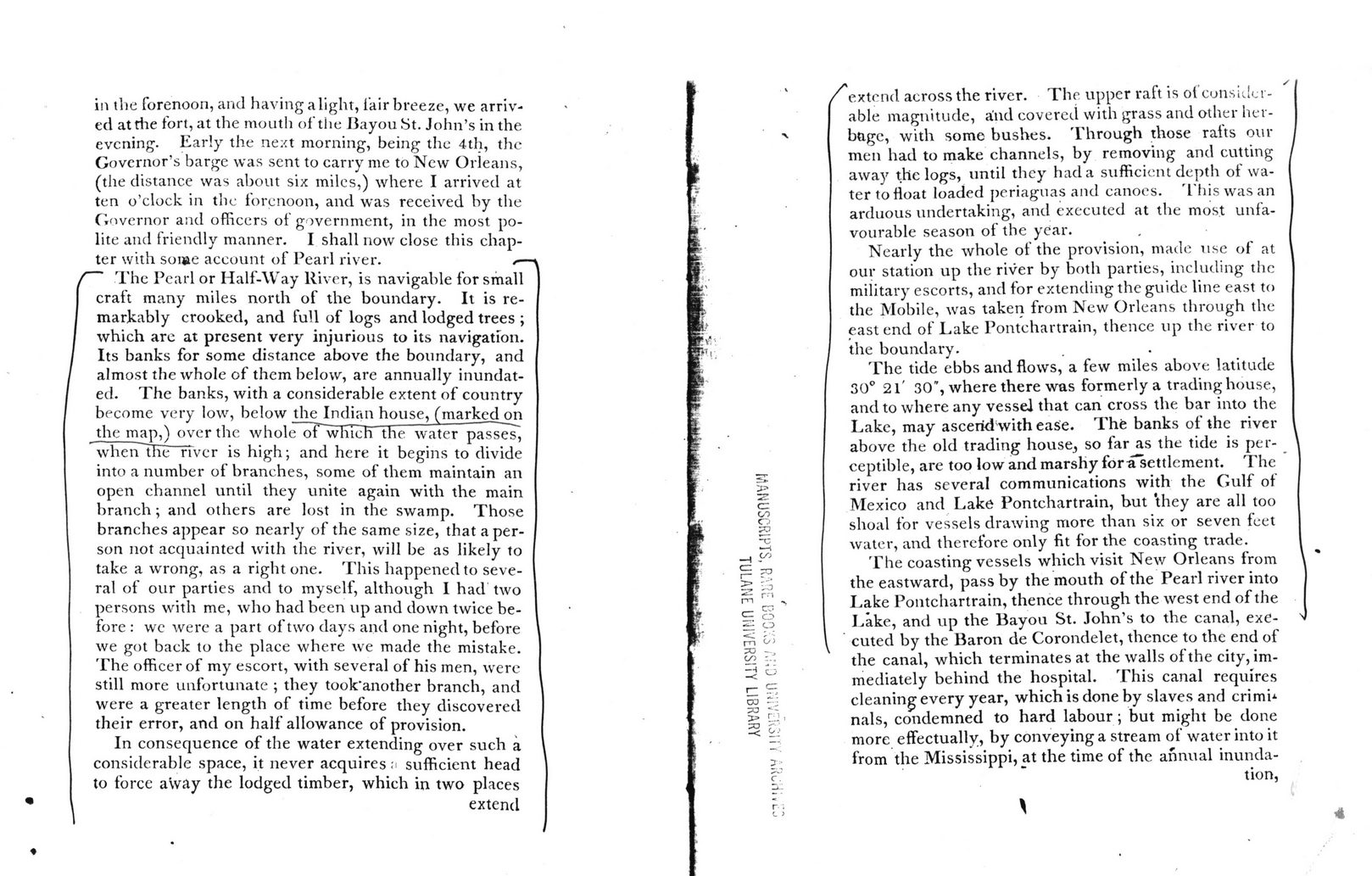This text was obtained via automated optical character recognition.
It has not been edited and may therefore contain several errors.
in the forenoon, and having a light, lair breeze, we arrived atrhe fort, at the mouth of the Bayou St. John’s in the evening. Early the next morning, being the 4th, the Governor’s barge was sent to carry me to New Orleans, (the distance was about six miles,) where I arrived at ten o’clock in the forenoon, and was received by the Governor and officers of government, in the most polite and friendly manner. I shall now close this chapter with some account of Pearl river. /- The Pearl or Half-Way River, is navigable for small craft many miles north of the boundary. It is remarkably crooked, and full of logs and lodged trees ; which are at present very injurious to its navigation. Its banks for some distance above the boundary, and almost the whole of them below, are annually inundated. The banks, with a considerable extent of country become very low, below die Indian house, (marked on the map,) over the whol<ToT~which" the water passes', when the river is high; and here it begins to divide into a number of branches, some of them maintain an open channel until they unite again with the main branch; and others are lost in the swamp. Those branches appear so nearly of the same size, that a person not acquainted with the river, will be as likely to take a wrong, as a right one. This happened to several of our parties and to myself, although I had two persons with me, who had been up and down twice before : we were a part of two days and one night, before we got back to the place where we made the mistake. The officer of my escort, with several of his men, were still more unfortunate ; they took'another branch, and were a greater length of time before they discovered their error, and on half allowance of provision. In consequence of the water extending over such a considerable space, it never acquires ;< sufficient head to force away the lodged timber, which in two places extend Z'extend across the river. The upper raft is ot consider- I able magnitude, and covered with grass and other her- I bage, with some bushes. 'Through those rafts our men had to make channels, by removing and cutting away the logs, until they had a sufficient depth of water to float loaded periaguas and canoes. This was an arduous undertaking, and executed at the most unfavourable season of the year. Nearly the whole of the provision, made use of at our station up the river by both parties, including the military escorts, and for extending the guide line east to the Mobile, was taken from New Orleans through the east end of Lake Pontchartrain, thence up the river to the boundary. The tide ebbs and flows, a few miles above latitude 30° 21' 30% where there was formerly a trading house, and to where any vessel that can cross the bar into the Lake, may ascend with ease. The banks of the river above the old trading house^ so far as the tide is perceptible, are too low and marshy fora settlement. The river has several communications with the Gulf ot Mexico and Lake Pontchartrain, but they are all too shoal for vessels drawing more than six or seven feet water, and therefore only fit for the coasting trade. The coasting vessels which visit New Orleans from ’ the eastward, pass by the mouth of the Pearl river into Lake Pontchartrain, thence through the west end of the Lake, and up the Bayou St. John’s to the canal, exe- ' \ cuted by the Baron de Corondelet, thence to the end of the canal, which terminates at the walls of the city, immediately behind the hospital. This canal requires cleaning every year, which is done by slaves and crimU nals, condemned to hard labour; but might be done more effectually, by conveying a stream of water into it from the Mississippi, at the time of the annual inundation,

Hancock County Early Andrew-Ellicott-journal-1803-(028)